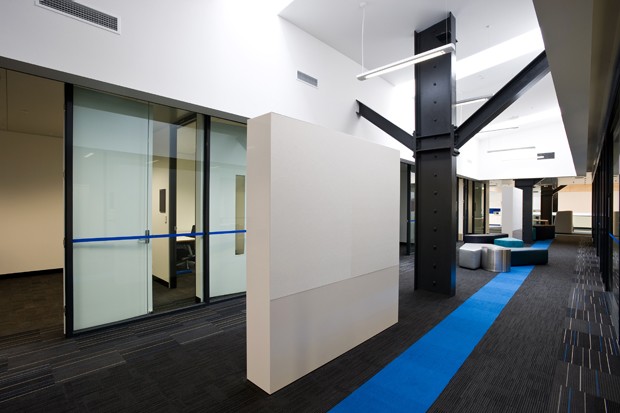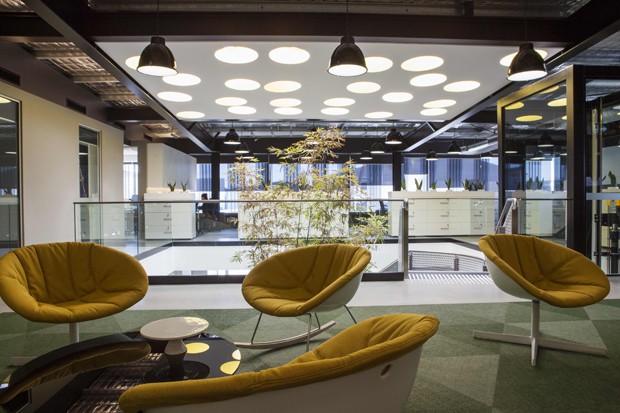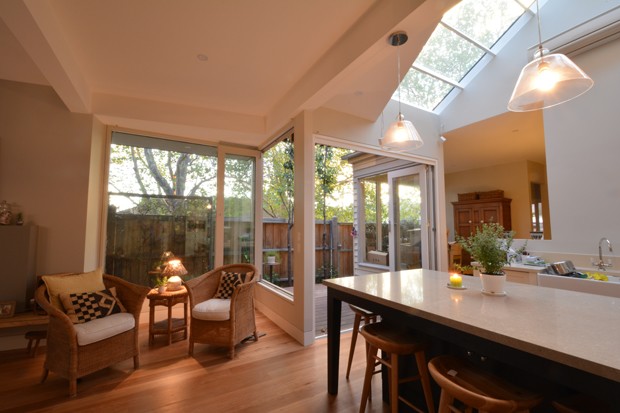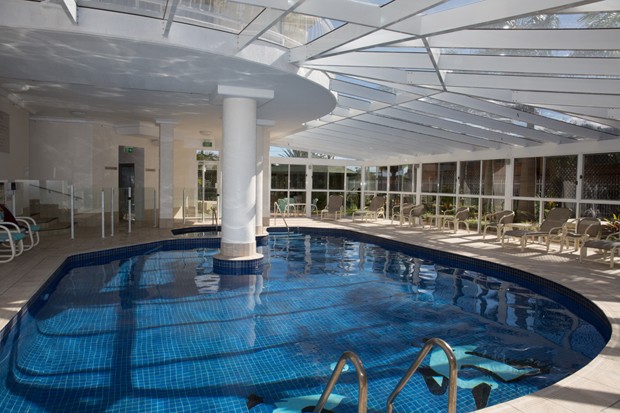When designing buildings to utilise sunlight – be it to meet regulations, minimise the need for artificial lighting or to enliven interiors – translucent and transparent roofs, as well as skylights, are gaining greater recognition for their ability to outperform windows.
The advantages of clear roofs and skylights that allow natural light to stream in are many and varied. Daylight is an essential natural asset with proven physiological benefits that artificial lighting cannot replicate.
At the same time, they help a room feel more open, while protecting it from external elements. This minimises the impact of seasonality, which is especially important for places such as indoor aquatic facilities, waterparks, and hotel and resort pools which seek consistent revenue.
Transparent roofs can also enhance the design of a building by extending views to a building’s surrounds, giving the illusion of more space.
“The benefits of installing translucent roofs are that they can admit comfortable diffused daylight three times more efficiently than the equivalent area on a wall,” notes Andrew Norman of Danpalon Australia.
“This can reduce artificial lighting and HVAC requirements to significant life cycle cost savings, as well as improve the amenity of a building substantially.”
Of course, only roofs that are insulated or double glazed, with appropriate protection against excessive heat gains, can help maintain stable temperatures in a room and contribute to energy efficiency. Products should also offer reflective and conductive insulation so that heat losses are minimised during winter.
This is not limited to residential buildings, as technological improvements have led to better insulation of commercial skylights so they work in a positive fashion – not letting out heated air in winter, or the air-conditioned air in summer.
Here are five projects that have capitalised on roofing products to not only let the light in, but also contribute to the energy efficiency of buildings.
Deakin University Australian Future Fibres Research & Innovation Centre by DesignInc

DesignInc employed the Controlite system by Danpalon Australia to maximise daylight within the Deakin University Australian Future Fibres Research and Innovation Centre [AFFRIC] in the Waurn Ponds Campus of Deakin University.
Linked to the commercial component of AFFRIC, the facility is a two level fit-out of the remaining undeveloped and vacant space within the Geelong Technology Precinct.
Project architect Philip Weatherlake says Controlite louvres were installed in a high-ceiling and wide corridor space between two runs of offices with glass fronts to them.
“They were specified to give some control to light coming in the space, and control heat in summer,” he said.
“When the sun is shining straight in, they can help to reduce the heat coming in, and if it was quite cloudy, users can open up the louvers as well using the control panel on the wall.”
Weatherlake also points to the functionality of the system. Easy to adjust and use, he believes that the Controlite system will, to some extent, contribute to reduced energy use and increased occupant comfort.
More information about Controlite can be found here.
Victoria University in Melbourne by Cox Architects

Completed in late 2012, the 12,000sqm Construction Futures project at Victoria University in Melbourne by Cox Architects is a construction and building training facility.
The design incorporates Lexan Thermoclear polycarbonate sheets from Ampelite, which has helped express the progressive nature of the construction industry, specifically the influx of new materials and construction design technologies that are readily available and rapidly developed.
This is expected to encourage industry partners to engage with the centre, providing the students with invaluable experience and industry exposure.
A high quality, low maintenance glazing material based on Lexan polycarbonate resin, the Lexan Thermoclear sheets feature a two-sided proprietary surface treatment that protect the sheet against the degrading effects of ultra-violet radiation in natural sunlight, yellowing, as well as Australia’s harsh climate.
More information about Lexan Thermoclear can be found here.
Corporate headquarters for R&W Traders by PTI Group

The new Sydney corporate headquarters for R&W Traders, which owns The Cheesecake Shop, was designed by PTI Group to include the Solatube 750 DS units, with extension kits and Solatube round diffusers.
An extension to a fire-damaged office, the site faced constraints and the floor plan had to take the form of a square shape. According to Lewis Lau of PTI, this made it difficult to bring sunlight into the rear part of the office, which is housed in a two storey building.
At the same time, strict requirements by the BCA placed a limit on the number of skylights that could be installed.
In response, PTI created a courtyard in the middle and installed the effective Solatube skylights above.
“Solatube has a very good feature, which is an extension tube, whereby the light can bounce within the tube and diffuser without compromising on efficiency,” said Lau.
The tube is relatively big, being 530mm in diameter, and located high up and above the reflection tube.
“It’s almost like you can’t see where the light is coming from through a long tube,” noted Lau.
The Solatube DS skylights were also chosen as part of the design formula. Multiple units have been used within a suspended bulkhead, with their interiors painted yellow. This has led to a ‘swiss cheese effect’, which successfully creates impactful design and business statement while providing occupants with an abundance of light.
More information about Solatube 750 DS can be found here.
Berlin House by Blomquist and Wark Architects

Berlin House by Blomquist and Wark Architects is another project that has been enhanced by skylights.
According to architect Peter Schreuder, getting more direct sunlight into the living spaces and new bedrooms was an important part of the project. However, instead of introducing internal courtyards, the team decided to install nine glass skylights from Velux around the house.
The skylights have created the illusion of more space, while their orientation and locations ensure the majority of the hot afternoon summer sun is kept out.
Unwanted heat and light is further dealt with by the low e, double glazed skylights. Some of the skylights are motorised so they can be opened to encourage air flow through the house.
Motorised block out blinds have also been installed on skylights found on the north side of the house, working to prevent undesired heat gain (and help the children sleep at night when the moon is out).
“The glass roofs and skylights have transformed the feel of the house, with all the living areas now bathed in natural light, and at particular times of the day, direct sunlight,” said Schreuder.
More information about the Velux VS skylights can be found here.
2nd Avenue Apartments by R.H Frankland & Associates

The pool area at 2nd Avenue Apartments in Gold Coast is sheltered by a roof made of Makrolon sheets from Bayer Australia.
This same roof, however, allows daylight to stream in, and gives night swimmers or patrons a chance to gaze up to the stars above while watching a night-time movie run by the building management.
According to Steve Hardy, director of R.H Frankland & Associates, the Makrolon sheets were chosen because they stayed in line with the original design intent, which was initially fulfilled by glass panels that had aged and cracked.
They were also selected because they could be cut on site and scribed, and did not require specially-made templates.
An added benefit was being able to utilise single length sheets, which is not an option with glass.
“We can get the Makrolon sheeting up to nine metres in length as a single sheet, and that’s certainly made a difference,” said Hardy.
“That’s better than having to deal with smaller sheets and have joints all the way through them. It provides a clearer finish.”
With a grey tint to it, the Makrolon sheeting utilised also reflects more heat than just straight clear glass.
More information about the Makrolon sheeting can be found here.

